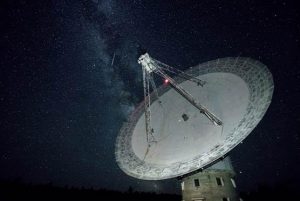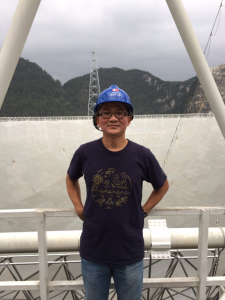
The Algonquin Radio Observatory (ARO), built in 1965, along with the Dominion Radio Astrophysical Observatory (DRAO) are the first to achieve very long baseline interferometry (VLBI), whereby two single-dish telescopes are combined to provide the same resolution as a telescope the size of Canada.
CITA, the Dunlap Institute, and the Department of Astronomy and Astrophysics collectively have continued the Canadian VLBI tradition with a new program to conduct transnational interferometric observations of pulsars and fast radio bursts (FRBs). The former has been named “scintillometry,” whose purpose is to utilize VLBI on earth in combination with scattering in the interstellar medium (ISM) to create an effective telescope size of ~astronomical unit to study pulsars and the intervening matter between us and them. The latter could provide the first ever spatial localization of FRBs.
Field Work:
Pulsar VLBI is located at the Algonquin Radio Observatory, which is visited frequently for data collection. The Crab pulsar will be studied using scintillometry techniques and VLBI. To obtain better images, one would need a telescope with a larger diameter. An easy way to increase diameter was to combine the signals from multiple telescopes using them as an interferometer thus creating VLBI. The data collected at Algonquin are synced up to data collected with other telescopes across the world. The radio waves that is emitted from the pulses propagate to telescopes on earth directly and indirectly via deflections on a scattering screen in the interstellar medium in space. The different paths interfere thus causing scintillation. By observing the scintillation with multiple telescopes on Earth, it is possible to estimate the pulsar’s position with extremely high precision.
More information
Algonquin Overview
Gallery
Canadian VLBI
CITA and VLBI
Supported by NSERC: 
